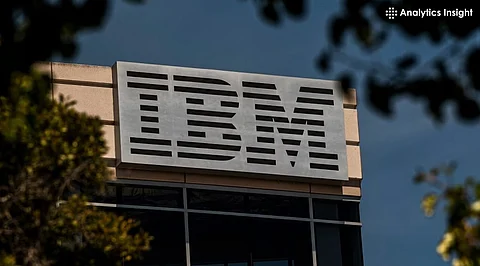

IBM is no longer just a legacy tech giant—its focus on Watsonx, Granite AI models, and enterprise-first innovation is reshaping its role as a key force in artificial intelligence and hybrid cloud computing.
Once synonymous with mainframe and enterprise hardware domination, IBM has stealthily become a top player in the international AI wars. IBM has plotted a different course, as opposed to other brands like Google, OpenAI, and more. This branding is based on enterprise-level innovation, strategic shifts, and measured risk-taking.
IBM’s makeover wasn’t overnight. It started building the foundation decades earlier with symbolic mileposts, Deep Blue’s 1997 chess victory over Garry Kasparov, and Watson’s Jeopardy! Won in 2011. Impressive as they were, those feats were so much about establishing AI’s potential as a technology and less about realizing its commercial potential.
The actual inflection point arrived in 2020, when Arvind Krishna became CEO. With a strong heritage in cloud and AI, Krishna launched a company-wide transformation that guided IBM away from its low-growth legacy businesses and into emerging markets with greater margins.
Among some of Krishna’s most important moves was the $34-billion acquisition of Red Hat in 2019-until then, the largest acquisition ever undertaken by IBM. As a result, the acquisition helped put IBM's hybrid cloud in the front seat and also helped create the architecture to support AI models securely and at scale across disparate environments.
Shortly afterward, IBM spun off its IT infrastructure business as a separate company known as Kyndryl in 2021. This might side-step discounts backed in. They allow IBM to shed its very heavy baggage and to concentrate on software, cloud, and AI.
Ultimately, came Watsonx ambitious AI and data platform launched in 2023. As opposed to consumer-facing AI chatbots, Watsonx was built for businesses, providing governance, transparency, and the capability to develop, train, and deploy large-scale AI models for defined business purposes.
IBM launched its line of foundation models called Granite under Watsonx. These are not behemoth, open-ended models such as GPT-4 but are designed specifically for particular enterprise tasks, document summarization, customer service, and code writing.
With a world more and more obsessed with AI hallucinations, privacy breaches, and model bloat, IBM’s no-nonsense strategy presents an attractive alternative, particularly for industries such as banking, healthcare, and government that require compliance and data sensitivity.
Analysts are starting to sit up and take notice. In a recent note, Wedbush Securities sees IBM as an "AI sleeping giant" with an outperform rating and a $300 stock price target. Its shares have already risen 14% year-to-date, beating the tech-heavy Nasdaq 100.
IBM has also logged $6 billion in business and $3.5 billion in internal savings from its generative AI deployments, tangible metrics that the shift is more than a publicity stunt.
As with all technological revolutions, AI’s integration hasn’t been without disruption. IBM has acknowledged automating hundreds of human resources roles. But it has also ramped up hiring in programming, sales, and AI implementation, roles that require human judgment, creativity, and emotional intelligence.
In CEO Krishna’s own words, AI isn’t about job elimination; it’s about job transformation.
IBM’s AI shift is supported by sustained capital investments. IBM will invest $150 billion in the US over the next five years, prioritizing AI, quantum, and US production of advanced hardware. These actions indicate a belief that AI is not a short-term fad, but a fundamental change in the conduct of business.
Then, IBM addresses talent challenges directly. Through initiatives like SkillsBuild, it aims to reskill 30 million people by 2030. The program allows people from around the globe to access free AI and data science capabilities. This is a win for both the talent pipeline and for the larger goal of ethical AI from an enterprise-first approach.
While others have pursued breakthroughs and consumer AI battles for the glory of something like Ray, IBM has deliberately taken a disciplined path. Its enterprise AI, governance, and real-world value creation may not make viral headlines, but it’s building trust where it matters most: the boardroom.
In a business where hype tends to outstrip substance, IBM’s gradual rise as an AI leader might be the template for long-term success in the era of intelligent machines.
